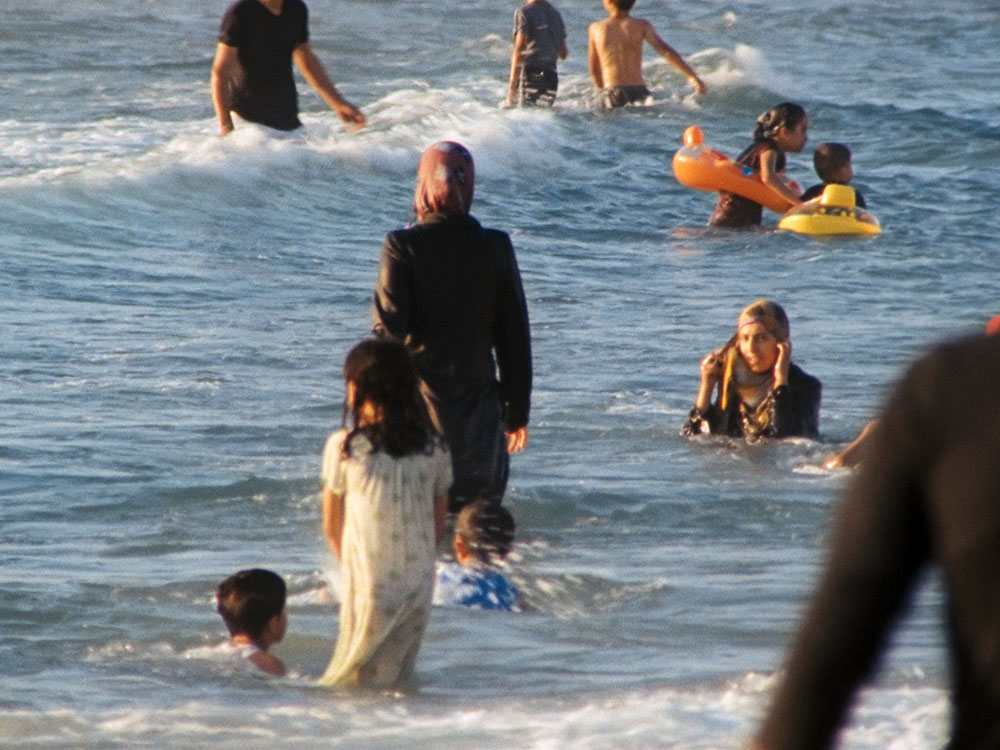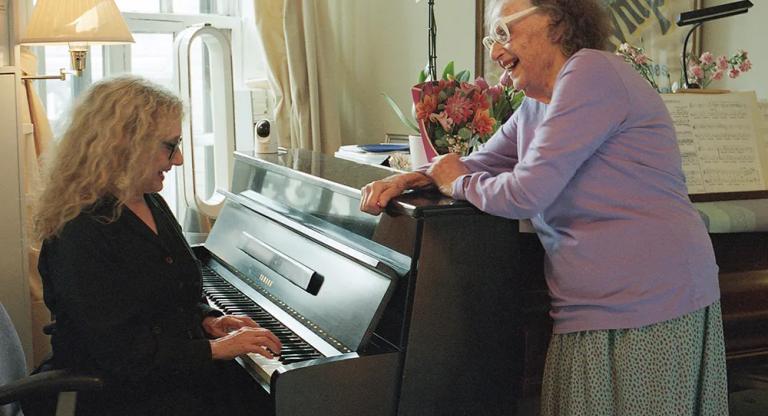It took me some time to figure out how to precisely describe the acute charge of Rosalind Nashashibi’s films. They can feel aloof, nearly soporific in their gaze, but strangely fiery. “I’m usually trying to understand something that I don’t have language for yet,” the Palestinian British artist told Art Monthly in 2015, “by making comparisons or juxtapositions so that I can read the friction that occurs between things/times/situations I encounter.” It’s that word—friction—that sticks. Nashashibi’s films take an interest in the embers created between dualisms that burn as they collide: of machinery and nature, of humanity and society, of mothers and daughters, of absence and togetherness.
Open Day (2001), one of Nashashibi’s earlier works, showcases scenes of office workers. They try to ignore the fact of being filmed, flinching when catching the camera’s eye by accident. Whispers of a less monotonous world outside these walls litter their desks: cut flowers, pens astray, partially filled mugs. Nashashibi follows these workers to acts of leisure, such as rock climbing or yoga. Like her later work, Open Day has no arc, no narrative, no artificial imposition of a story—only, really, the story that the observation of strangers naturally invites. Here again is that sense of friction, of the routines of labor in which these workers must participate, against the natural ebb of their wills and desires. Watching these people leave the office only to try to scale fake rocks on a plastic wall, failing and falling every few feet, makes their lives appear to be some strange Sisyphean performance. The friction Nashashibi invokes here is pointed, so frank that it feels wilting, even striking a sardonic note as the film ends with Bruce Springsteen’s voice over a cramped room of yoga mets and stretching bodies: “Mister state trooper, please don’t stop me.”
The minute-long Juniper Set (2009) is entirely absent of people: only seats on a train. The film loops between a medium shot and close-ups of their patterns, which quiver with the movement of the train along the rails. I watched this film over and over, each time restless to look elsewhere: behind the seats, outside the window. I felt as if I was searching, for comprehension, for context. But then I felt that there was a beauty to this, and that it spoke to the broader beauty of Nashashibi’s art. Nashashibi’s films are not about people at all. Her films are about the eternal shapes with which we live, to which we are only passing participants. People exist in her films as itinerant wanderers, living in ways that sometimes ring comedic when you stare for too long. Nashashibi films with an eye towards eternity.
As I watched Jack’s Straw Castle (2009), I didn’t think of the people in the film, but of some feeling of sorrow, in spite of all that the film is: shots of trees rustling, of people walking through a park, of the day receding. A moment in Vivian’s Garden (2007) in which the artist Vivian Suter falls asleep in a child’s bed, with embroidered blankets and a sun atop her headboard made me think of how daughterhood and childhood are themselves small eternities that seem to live with us, rather than be outgrown. The striking inclusion of animation in Electrical Gaza (2015) speaks more directly to what Nashashibi’s art has always seemed to know: there is something unreal—maybe extraordinary, maybe unnatural—about the way we live, no matter how our surfaces may seem.
“In the Quiet Moments: Films by Rosalind Nashashibi” screens tonight at e-flux screening room. The artist will be in attendance.



